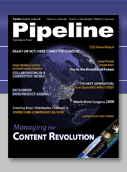article
page | 1 | 2 | 3 | 4 |
area. MSOs are trying to put the back office tools in place that they need to leverage Open Cable middleware capabilities. They are using specific data collection tools, for example, to gather user data from more capable and IP enabled set tops to make audience information available that advertisers can, in turn, analyze to target their offers. This is meant to provide a level of granularity that Nielsen ratings can’t approach. They are also putting service management tools in place that span the gap between real-time systems in the network and back office systems and databases that house permissions, policies, entitlements, and unified customer profiles.
Policies, permissions and entitlements are defined in back office systems like customer care platforms, billing systems, security applications, and provisioning consoles. MSOs are looking to put service management solutions in place that can protect these critical back office systems from real-time performance demands. These solutions ensure that the right information is extracted from those systems and injected into execution systems that drive and govern real time user interactions with services and advertisements. Service management systems also ensure that the right information is delivered back to the appropriate back end systems as users change their preferences, parental controls, or status. That way, processes like billing and service fulfillment, or the processes that will target ads and promotions, are keying off of accurate and up to date information like user preferences, opt-ins, and service subscriptions.
While none of this is necessarily simple, the incremental approach to creating smart distribution channels is where telcos can succeed and avoid being commoditized. Telcos don’t need to wait for IMS to save them, nor do they need to become master marketers and analytics experts overnight.



